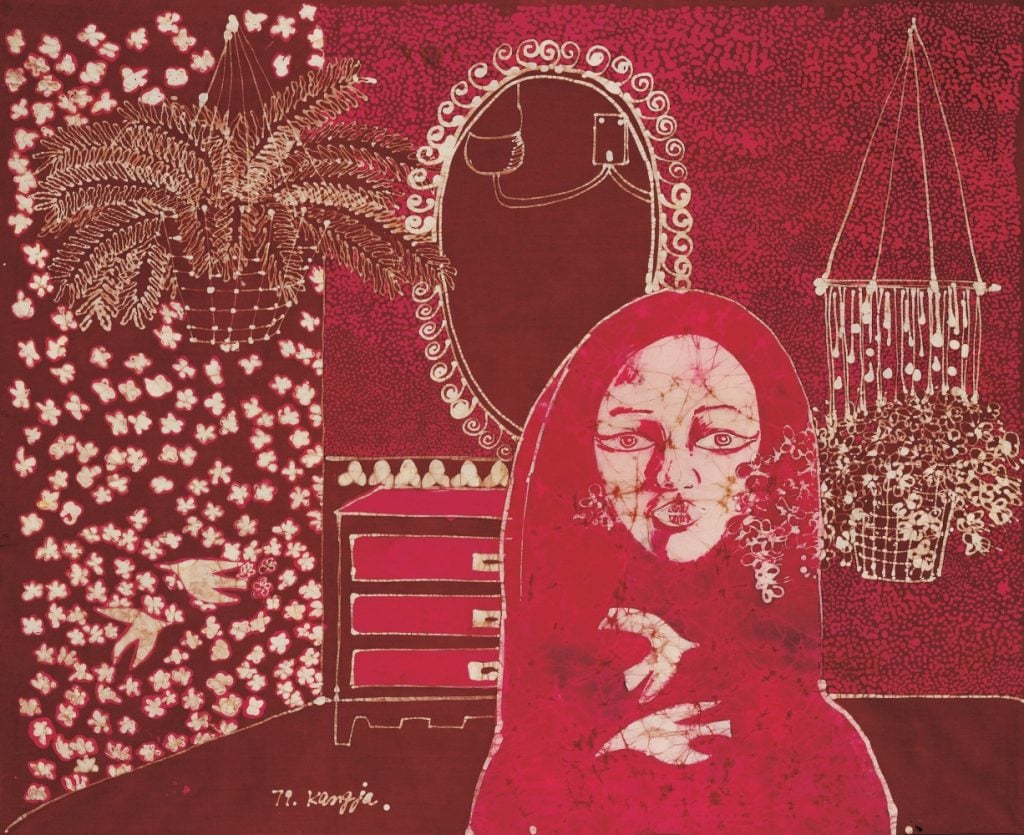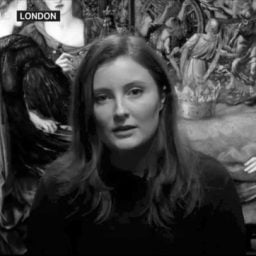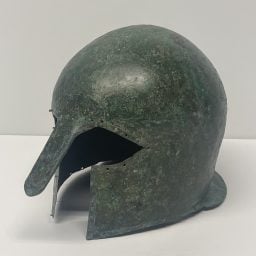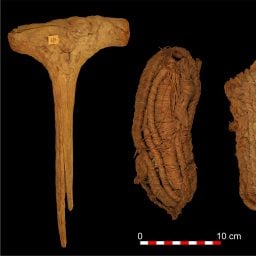If this year’s Frieze Masters in London is any indication, enthusiasm for the rediscoveries of historically overlooked women artists is as strong as ever. A section of the fair entitled “Modern Women” is devoted to just these stories, bringing together a curated selection of artists who worked between 1880 and 1980. Curated by AWARE (Archive of Women Artists, Research and Exhibitions), the section’s solo exhibitions bring together both unfamiliar names and artists who have earned acclaim in recent years, including Faith Ringgold, Vera Molnar, and Tarsila Do Amaral.
Among the discoveries is the work of radical French Fauvist painter Émilie Charmy, who made a living from conventional domestic scenes and still-lives but painted seductive nudes and daringly risqué self-portraits on the side. She is included in a new exhibition on Fauvism at the Kunstmuseum Basel, which spotlights the women integral to the movement.
A smattering of female Old Masters are also on offer at the fair, including works by the fabulously successful Venetian Rococo painter Rosalba Carriera. Philip Mould is bringing two of her pastel studies. One of the studies, Personification of Africa (c. 1720), depicts a Black allegorical figure in exoticizing dress and holding up a scorpion. The image is indicative of the ways in which non-Western cultures were othered by European artists during the 18th century and beyond.
Two women artists who passed away in the last year are also being honored by exhibitors. The Italian photographer Lisetta Carmi, who spent her life representing marginalized communities will have works shown at Ciaccia Levi and Galleria Martini & Ronchetti. Meanwhile, Cecilia Brunson Projects will present paintings by the Brazilian artist Judith Lauand, who was associated with the Concrete movement and recently received a major retrospective at the São Paulo Museum of Art.
Below are five women artists whose works can be discovered at this year’s Frieze Masters (October 11–15) who we think you should know.
D’Lan Contemporary, Melbourne and New York
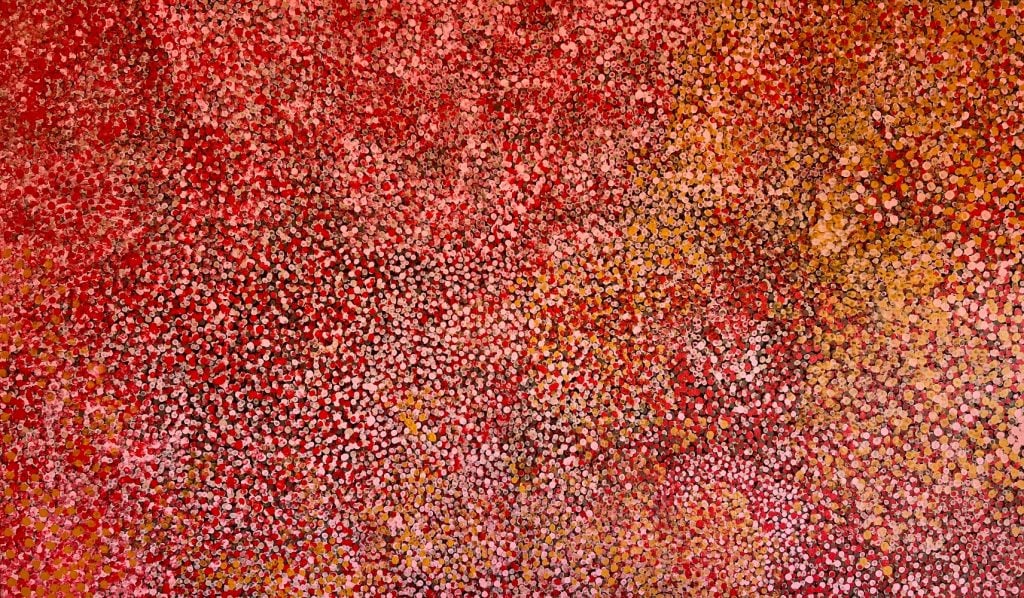
Emily Kam Kngwarray, Muna-Everything (1991). Photo courtesy of D’Lan Contemporary.
One of Australia’s most celebrated contemporary artists, the First Nations painter Emily Kam Kngwarray (1910—1996) will be represented by nine works at D’Lan Contemporary. As an elder within the Aboriginal community, she co-founded the Utopia Women’s Batik Group, which embraced the traditional Indonesian method of batik for dyeing textiles in the 1970s. In the summer of 1988, Kngwarray switched to acrylics and began producing abstract canvases that speak to her land’s life and spiritual cycles as well as ritual, movement, and ceremony. She gained international renown when her work was exhibited at the 47th Venice Biennale in 1997, just a year after her death.
Paule Vézelay
England & Co, London
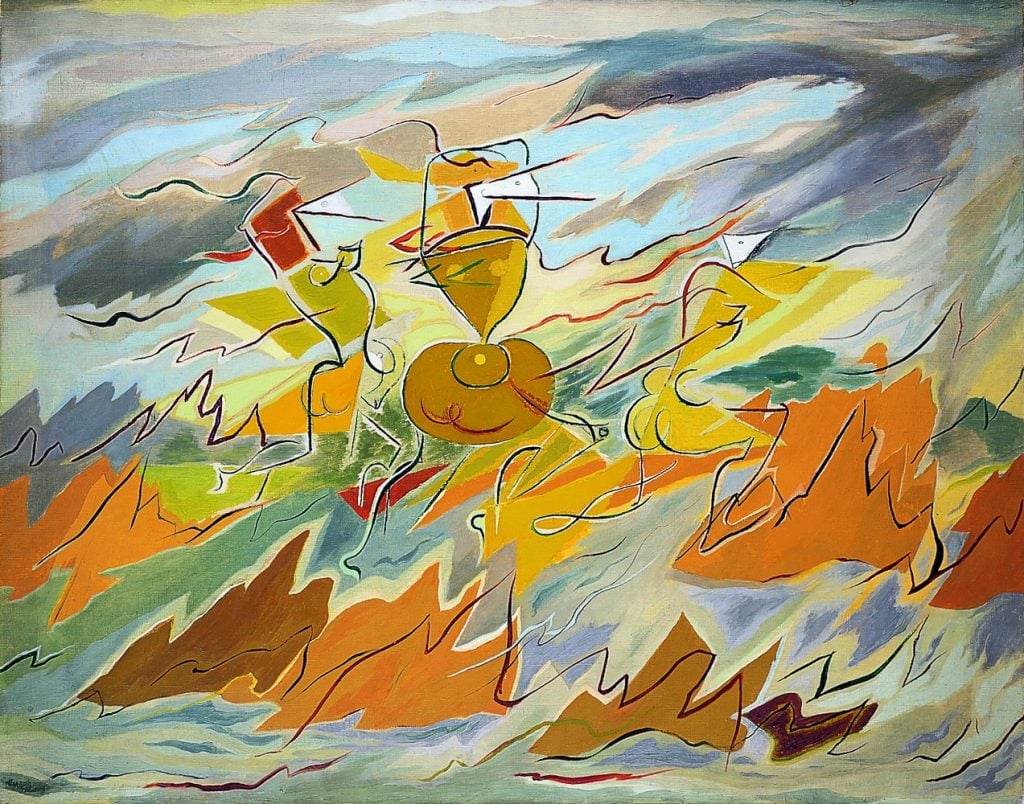
Paule Vézelay, Walking in the Wind (1930). Photo: England & Co, © Estate of Paule Vézelay.
Though she was born in Bristol, England, as Majorie Watson-Williams, the artist Paule Vézelay (1892-1984) had her own aspirations. She moved to Paris in 1926, where she changed her name and soon fell in with the avant-garde, forming a romantic partnership with the Surrealist artist André Masson. She also moved away from figurative painting towards abstraction at this time, but the outbreak of war forced Vézelay back to London where she eventually founded a branch of the Parisian constructivist movement Groupe Espace. Her work will also be included in a presentation of women artists who changed their original names by Marlborough Gallery, which features Gluck, Valentine Hugo, Marlow Moss, and Nicolaas Warb.
Anna-Eva Bergman
Perrotin
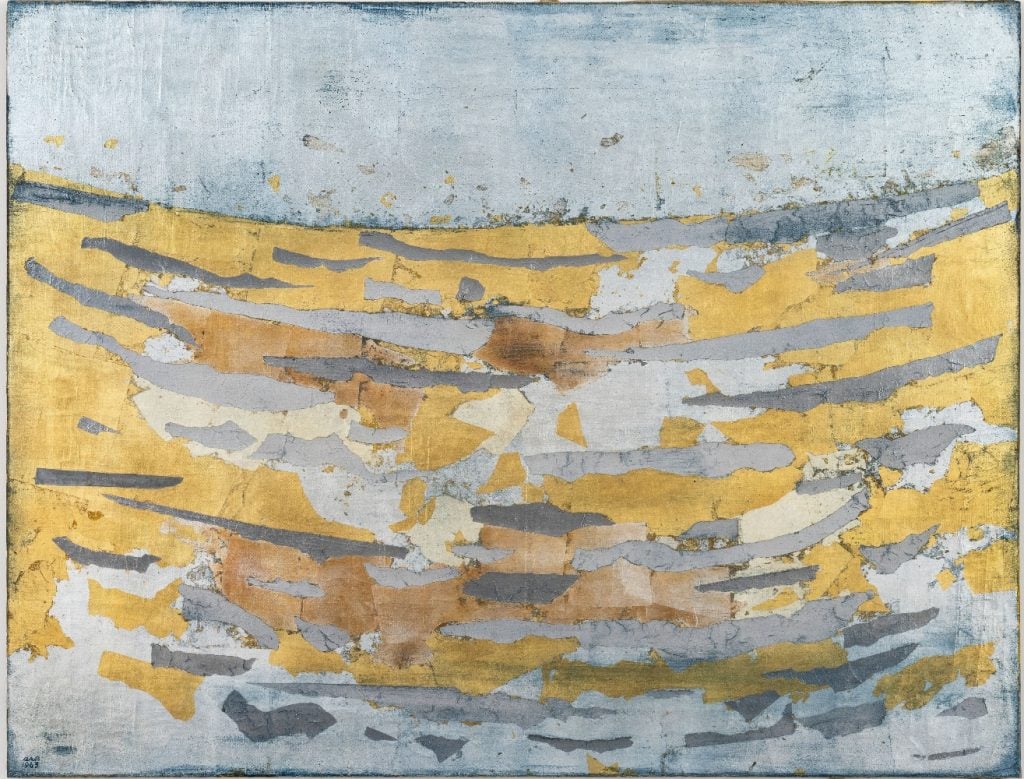
Anna-Eva Bergman, N°30-1963 Panorama (1963). Photo: Claire Dorn. Courtesy of Hartung Bergman Foundation and Perrotin.
Though Anna-Eva Bergman’s (1909–1987) paintings and works on paper appear to be highly abstract, they are greatly inspired by the landscapes of her native Norway. Attentive viewers will notice repeat motifs like the moon, star, mountain, valley, and tree, and appreciate how elements of the natural world are expressed in her palette and compositions. Prior to this, Bergman spent many years living in Paris where she met her twice husband, the German Abstract Expressionist Hans Hartung, whose reputation has since overshadowed hers. The Hartung-Bergman Foundation was later established at their old house in Antibes, where they lived after 1973.
Jung Kang-Ja
Arario Gallery, Seoul and Shanghai

Jung Kang-ja, Untitled (1980). Photo: © Jung Kangja Estate and Arario Gallery.
The boldly experimental practice of Korean artist Jung Kang-ja (1942-2017), who never shied from making political statements, was censored in 1970 by the Korean government, forcing her to flee to Singapore. It would be more than a decade before she could return. One of Jung’s installations on show will be To Repress (1968), a visual representation of “the oppressed existence of women” in which a heavy steel pipe squashes and compresses piled sheets of cotton. Like Kngwarray, she also used batik, producing many ambiguous studies of lone female figures. Jung’s work is currently included in “Only the Young: Experimental Art in Korea, 1960s–1970s” at the Guggenheim in New York through January 7, 2024.
Ethel Schwabacher
Berry Campbell, New York
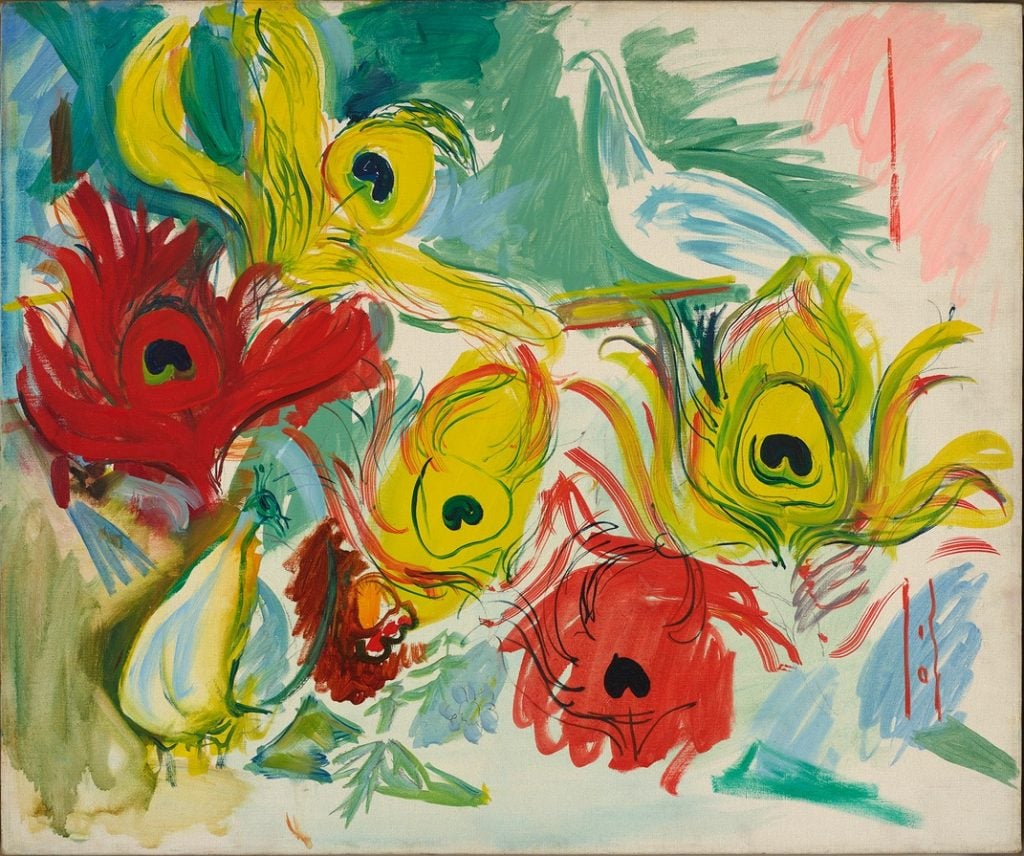
Ethel Schwabacher, Untitled (c. 1950). Photo: © Estate of Ethel Schwabacher, courtesy Berry Campbell, New York.
A regular of the New York art scene throughout the 1940s to the 1960s, the Abstract Expressionist Ethel Schwabacher (1903–1984) was included almost yearly in the Whitney Museum of American Art’s annual exhibitions. She had five solo shows at Betty Parsons Gallery. While living in Europe in the early 1930s, she experimented with Surrealist techniques like automatism to make early abstract works that explored her bodily experiences as a woman. On her return, she sought out as a mentor Arshile Gorky, who was himself reinventing European modernist influences within a New York context. She would later become his biographer.
Piano Nobile, London

Ethel Walker, Kneeling Nude (1935). Photo courtesy of PIANO NOBILE, LONDON.
Well-regarded in her lifetime for her sensitive portrayals of other women, including artists Barbara Hepworth and Vanessa Bell, the Scottish painter Dame Ethel Walker was the first female member of the New English Art Club in 1900 and represented Britain at the Venice Biennale four times between 1922 and 1930. Her reputation has since waned dramatically, but recent research into Walker’s life has led to informed speculation that she was a queer artist. She was also closely associated with the Bloomsbury Group. Walker will be the subject of a spotlight at the Tate Britain this fall.
